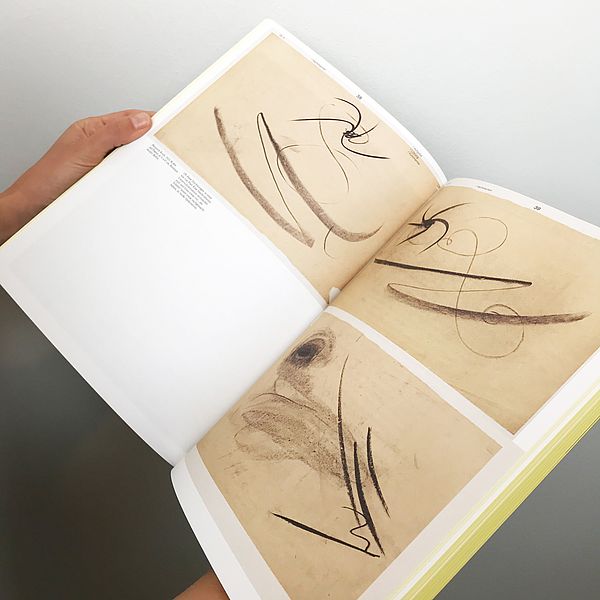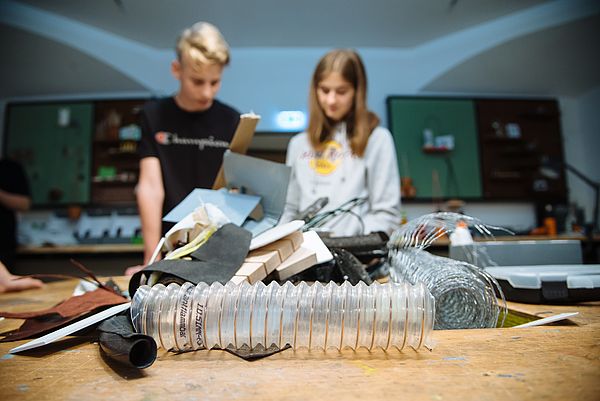Germany’s first comprehensive school turns 50
Bauhaus Agents
When it opened in 1968, the Walter Gropius School in Berlin’s Neukölln district was Germany’s first comprehensive school. Its 50th anniversary has now been celebrated with a week of festivities that gave the Berlin Bauhaus Agents an opportunity to offer a glimpse into their project work on site.
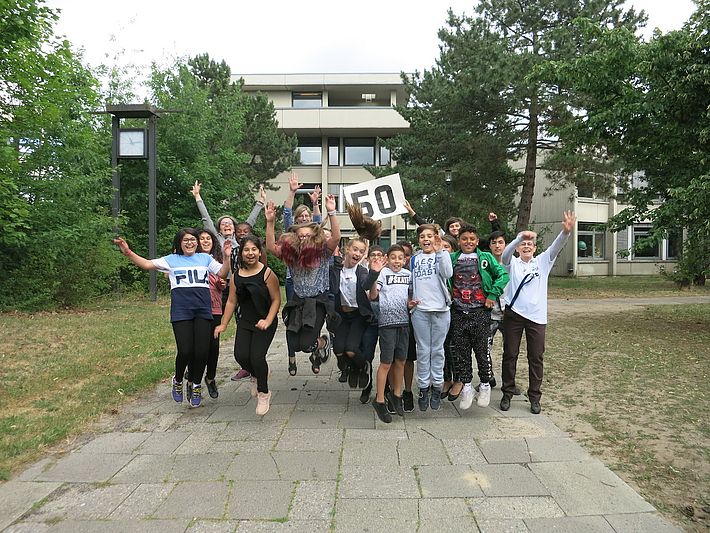
[Translate to English:] headline
The Walter Gropius School is one of eight schools in Berlin that partner with the Bauhaus Agent programme. The school is located in Gropiusstadt, a planned city quarter built between 1962 and 1975 in the southern part of today’s borough of Neukölln in the former West Berlin. Today it has about 36,000 inhabitants. The chief planner was Walter Gropius, who initially conceived a holistic concept meant to embody the social ideas of the Bauhaus in its architectural design and layout. During the planning process his overall concept was broken down into sub-concepts, which lead to major deviations from his original scheme. Still, the quarter is seen today as an essential contribution to architectural modernism. Particularly noteworthy are the semicircular Gropius House, the 31-storey IDEAL residential tower and the Walter Gropius School, which opened in 1968 as the first comprehensive school in Germany.
Today about 1000 girls and boys attend the school, and they joined in the anniversary celebrations that took place on 20-22 June. Also present were Berlin’s Bauhaus Agents who have been testing various Bauhaus teaching formats since the 2016–17 school year. Four projects that are currently underway were presented as examples during the anniversary week: the Bauhaus Curriculum, two audio walks and design workshops emphasising photography and optical colour mixing.
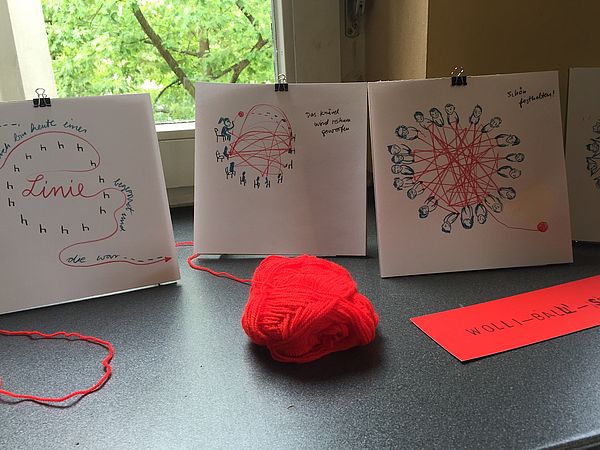
The Bauhaus curriculum
One aim of the Bauhaus Curriculum project that was presented during last week’s events is to devise a model for the joint development of interdisciplinary Bauhaus teaching materials for schools and museums. Upon completion, the exercise will produce a kit of educational tools about the Bauhaus that span a range of disciplines and appeal to various age groups.
The Bauhaus Curriculum project began in April 2017 with a 4th grade class, and has continued this school year with the same group as well as students from higher grades. In this first phase, the children and young people were engaged with design aspects such as line, surface, colour, form and architecture. Working with teachers Ms Schönbier and Ms Baum, the team of illustrator Doro Petersen, Bauhaus Agent Anja Edelman and the architect/Bauhaus Agent Maria Ricci develop didactic teaching materials that enable groups to address topics in an interdisciplinary and, whenever possible, playful and fun way. To do so, they employ methods taken directly from or inspired by the historic Bauhaus pedagogical curriculum, for example exercises from the preliminary courses.

Audiowalks
The second project – Audiowalk – is based on multi-sensory explorations of school, city and museum space. Together with sound artist Alexandre Decoupigny, students at the Gropius School have already created two audio walks. The research project entitled “Walter Gropius School City Museum” will continue over several school years and employs Gropius’s architecture as a thematic basis. The children and young people will feel their way forward, going out from the school into the city and on to the museum. At the end of this on-going process, the students will create an installation that works with sound, space and time to create a hyperreality of composed content and on-site occurrences. For this project, Alexandre Decoupigny works closely with the school’s music teachers Ms Stengl-Kruhl and Mr Topp.
Alongside the Bauhaus Curriculum and the development of the audio walks, workshops on virtual volumetric forms (with photographer Falk Weiß) and optical colour mixing (with Doro Petersen) are also in full swing. In the first, students explore the experimental photography made at the Bauhaus and at the New Bauhaus in Chicago, while the other starts with the work of artist Ludwig Hirschfeld-Mack, who dealt intensively with colour theory and colour experiments. Here too, classroom and art teacher Hanne Schönbier and art teachers Ms Baum and Ms Brotherton are closely involved in the work.
The presented projects will be further developed at the school, then the results will be tested in practice. We are eagerly looking forward to seeing the final presentations and reports posted on Facebook and Instagram.
[KL 2018; Translation: DK ]
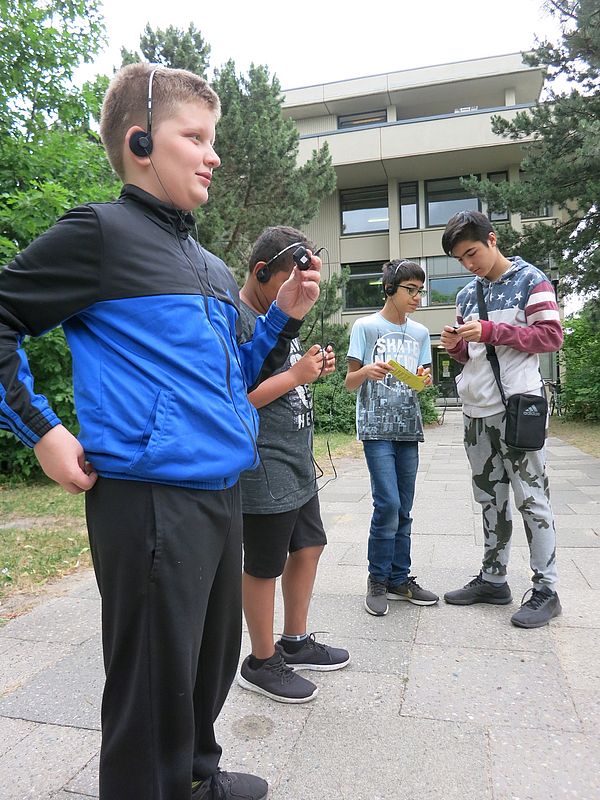

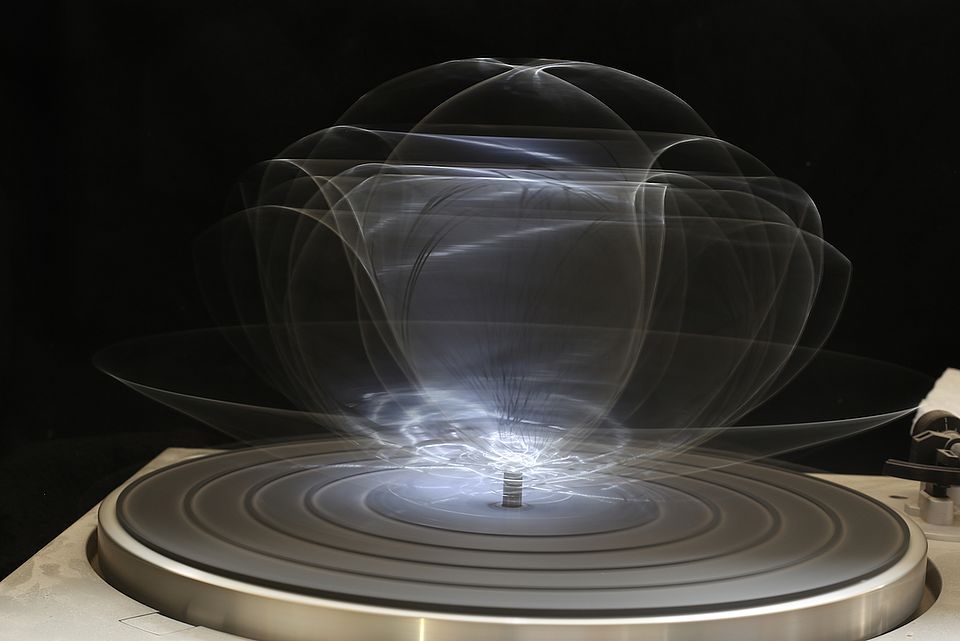
Bauhaus Agent
Maria Ricci
E-Mail
More projects of Bauhaus Agents Dessau
